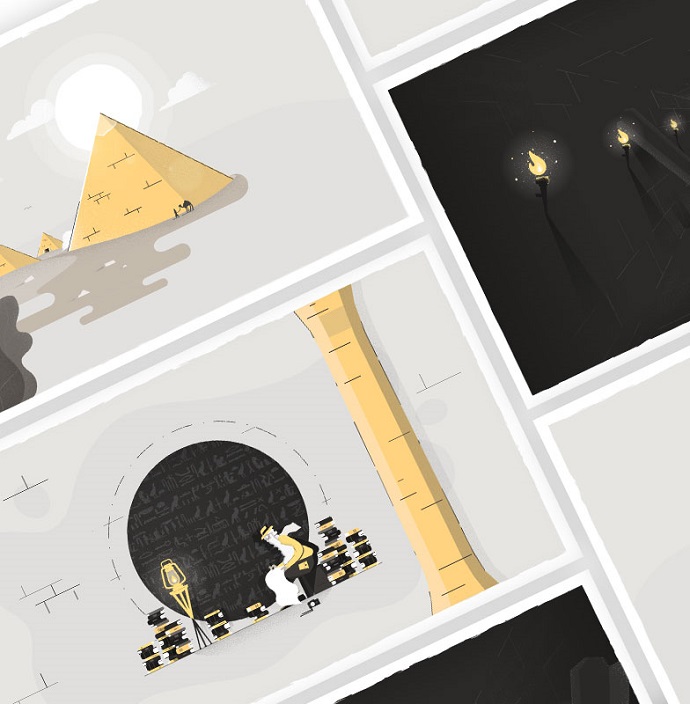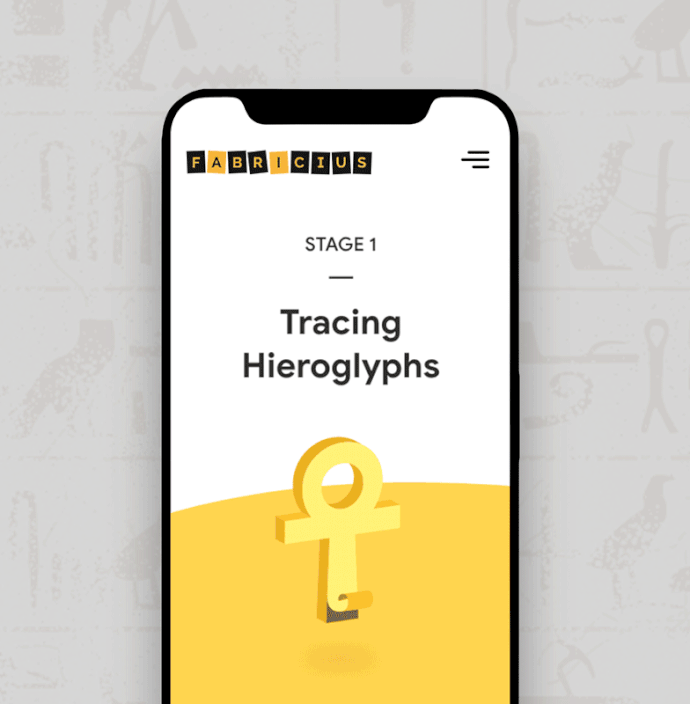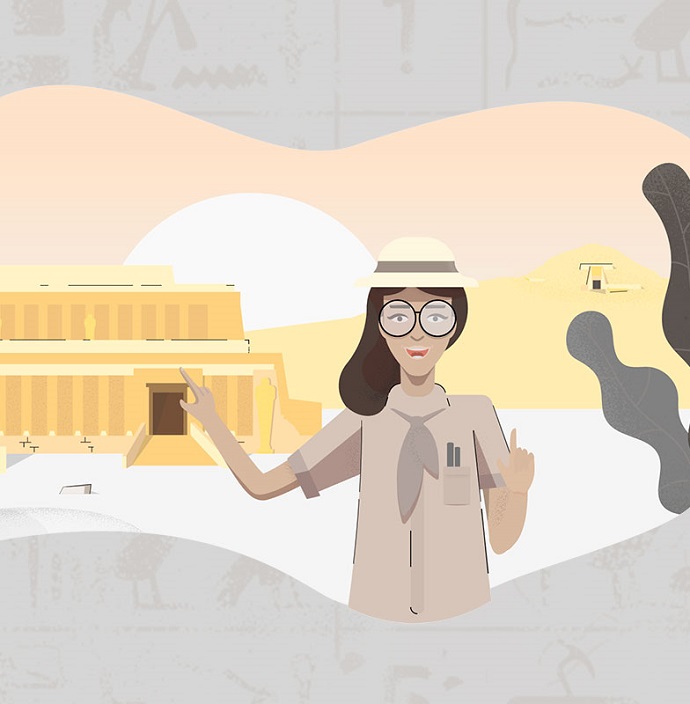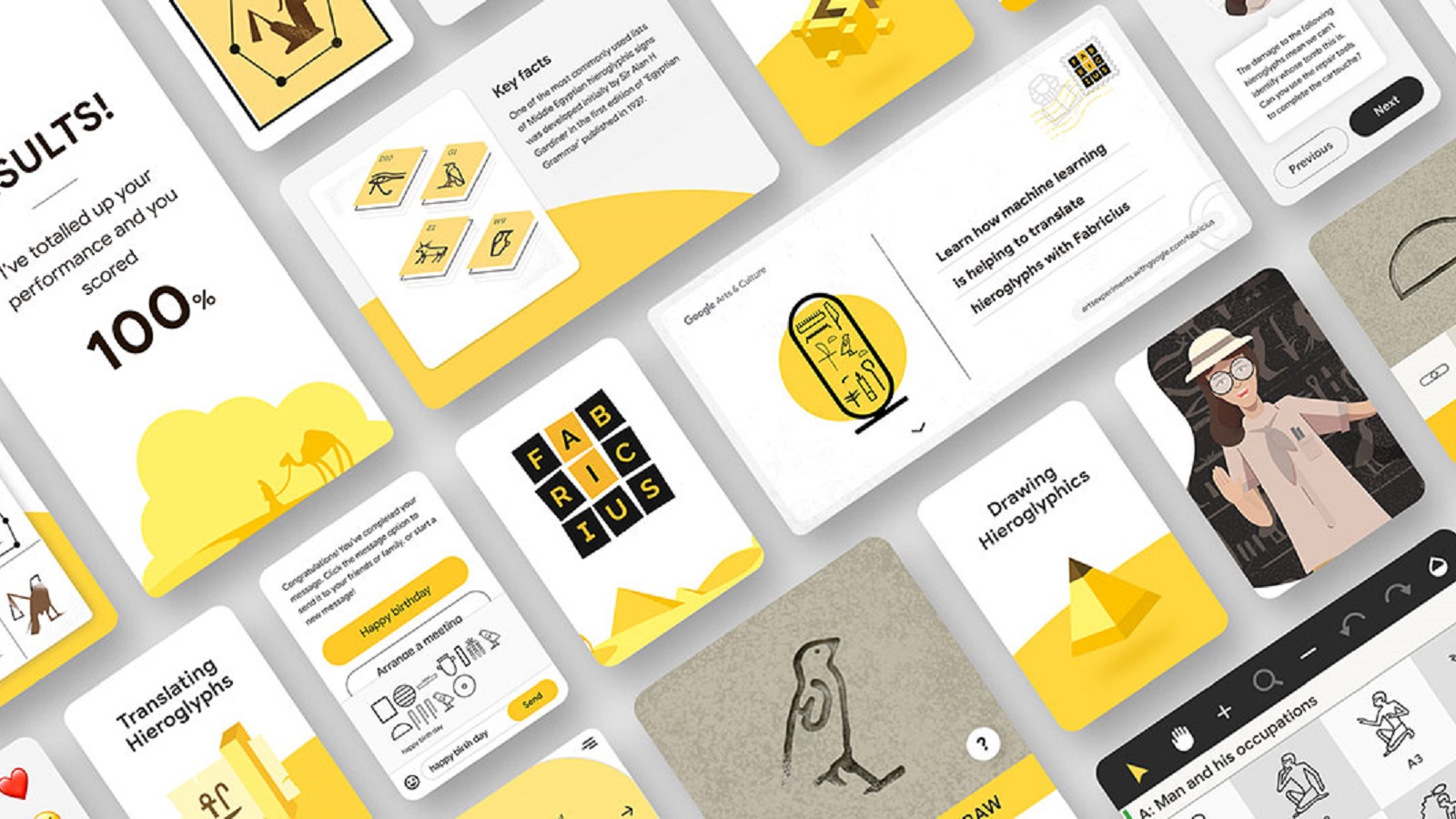Two centuries later after Jean-François Champollion “played” with the Rosetta Stone to unlock Egyptian hieroglyphs, both enthusiasts and amateurs are given a similar opportunity. With the help of Google Arts & Culture, we can all feel the experience of deciphering ancient hieroglyphs, thanks to the Fabricius tool, a Google initiative that explores the beauty of ancient languages and how technology can help in unlocking their meaning.
The project aims to open new avenues for academic research and the journey started with Ubisoft’s “The Hieroglyphics Initiative,” a research project launched three years ago at the British Museum, in September. The campaign’s launch coincided with Assassin’s Creed Origins’ release and was implemented with the goal of identifying whether machine learning could transform the process of collating, cataloguing, and understanding Pharaohs’ written language, for which Ubisoft worked with Google and Psycle Interactive.

During this week’s #ThrowBrandThursday column, we are going to dive deep into the “ancient” Google experiment, for which the company worked with institutions and academics from around the world to explain the whole translation process and also provide feedback on the tools and models created for the three phases of translation: extraction, classification, and translation.
Now, let’s get back to what Fabricius really has to offer to history enthusiasts and tech-savvy. This project merges a mysterious side of history with technology. It is a project dedicated to anyone who admires this side of the world’s history and trusts that technology can bring them closer to their answers. On its page, Google says that “anyone can interactively discover this fascinating language by means of three dedicated gateways,” referring to the next steps as: learn, play, and work.
We accepted Google’s fun challenge and became part of its game. So, first, we accessed the “Learn” phase. Here, you are an explorer in 1922, invited to help decipher a hieroglyphic script. And it’s simply amazing, as you’ve been chosen to be part of a cool mission: The rest of your crew opened a mysterious tomb in the Valley of the Kings and your job is to help them find what royalty was buried there. To get started, you need to trace hieroglyphs and help unlock them using different methods, like drawing them from memory, reconstruct the symbols because some of them were badly damaged, or learn what’s the appropriate way of reading them. We’ve discovered whose tomb is that but we will not ruin the experience for you.

Now that you’ve completed the “Learn” test, it is time to make the world know about your new skills as a translator, right? You are now redirected to the “Play” step, where you are encouraged to create your own message based on these symbols, which Google empowers us to think of them as “the ancient Egyptian equivalent of emojis.” Keep in mind the tool translates and auto-suggests words and phrases that are in its dictionary. Still, users are encouraged to experiment with alternatives and make this experience a fun one. Plus, you get to share with your social media friends your message. Now, let’s see, will they be able to unlock your message?
The last step of the game is about “Work,” a place where Google offers a set of tools to assist researchers with the translation of ancient types of writings (please note that it is available as an open-source).
“Fabricius includes the first digital tool — that is also being released as open-source to support further developments in the study of ancient languages — that decodes Egyptian hieroglyphs built on machine learning. Specifically, Google Cloud’s AutoML technology, AutoML Vision, was used to create a machine learning model that is able to make sense of what a hieroglyph is. In the past you would need a team of Data Scientists, a lot of code, and plenty of time, now AutoML Vision allows developers to easily train a machine to recognize all kinds of objects,” states Google.

The tool was named after Fabricius, who helped develop the science of epigraphy, the study of ancient inscriptions, and it is available in English and Arabic. Designed in collaboration with the Australian Center for Egyptology at Macquarie University, Psycle Interactive, Ubisoft, and Egyptologists from around the globe. “Fabricius doesn’t do automatic translation, but rather it’s a tool that helps experts translate the hieroglyphs more efficiently,” Head of preservation at Google Arts and Culture, Chance Coughenour, says.
He also added that “researchers will be able to upload images of hieroglyphs that they find in the field and, with the help of machine learning (ML) and artificial intelligence (AI).”
The experiment was born out of the idea that whether ML and AI could be used to help decipher such ancient languages, underlining the idea that Fabricius might have the potential to be used to decode and translate other languages with a unique writing system in the future.
Credits:
Project: Google Fabricius
Client: Google Arts & Culture
Agency: Psycle
